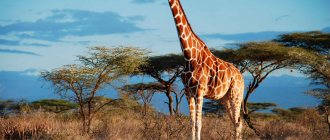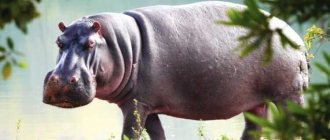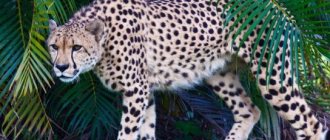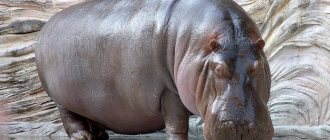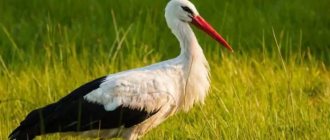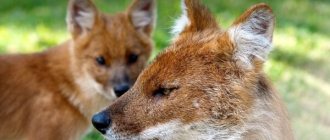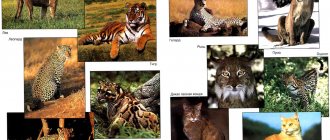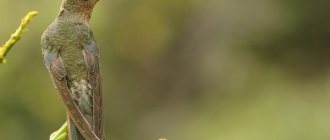The lion is one of the large predatory animals belonging to the cat family. There are several varieties of this animal; in addition, many hybrids are known that appeared from the mixing of different species. Each of them has certain characteristics, but also has similarities. The local population of the lands that are located near the habitat of the beast calls it a “wild cat” and considers it dangerous, and tries to destroy it. Because of this, the population of these animals has greatly decreased. Meanwhile, the lion is an interesting and unique animal, so it’s worth knowing how it differs from other representatives of the fauna.
Description
Lions are large cats with short, yellowish-brown fur and long tails with a black tassel at the end. They are sexually dimorphic, and males are the only felines that have a mane. The three-year-old male grows a mane that ranges in color from black to light brown. Manes tend to be thicker on lions that live in open areas. Adult males weigh about 189 kg; The record holder for the heaviest weight was a male, reaching 272 kilograms. Females weigh on average 126 kg. The average height at the withers of males is 1.2 meters, and that of females is 1.1 meters. The body length ranges from 2.4-3.3 m, and the tail length is 0.6-1.0 m. The longest recorded male lion was 3.3 meters.
Cubs up to 3 months old have brown spots on their grayish fur. These spots can remain throughout the life of the lion, especially the East African species. Albinism may occur in some populations, but there are no published records confirming melanism (black fur) in lions. Adults have 30 teeth, and adult females have 4 mammary glands.
Asiatic lions (P. l. persica) are much smaller in size than African lions and have a less dense mane. Their knees, tail tufts and longitudinal folds of skin on the abdomen are larger than those of African lions. Although Asiatic and African lions have genetic differences, they are no more significant than the genetic differences between human races.
Interesting facts about the lion:
- The lion is an old and popular heraldic symbol, and is associated with royalty and nobility.
- The maximum weight recorded for a male lion was 370 kg. The maximum body length of this predator was 3.6 m.
- Leos are often called the “Kings of Beasts”. In the folklore and mythology of the inhabitants of Africa, this predator personified the highest divine power, power and greatness, power. In the traditions of Europe, it was a symbol of the power of the sun and fire, courage, valor, pride, nobility, justice, and triumph. The image of a lioness was more often associated with motherhood, mother goddesses, and voluptuousness.
Area
African lions (Panthera Leo) are common south of the Sahara Desert, with the exception of deserts and tropical forests. Lions were once hunted to extinction in South Africa, but can now be found in the Kruger and Kalahari-Gemsbok national parks, and possibly in some other protected areas. Previously, lions lived in southwest Asia and northern Africa.
Asiatic lions (P. l. persica) belong to the one remaining subspecies in the region. After migrating from Greece to central India, Asiatic lions persist in the Gir Forest and northwestern India.
African lions live in plains or savannas, where there is a large amount of food supply (mainly ungulates) and the opportunity to hide in reliable shelter. In such optimal habitats, lions are the second most common large predator after the spotted hyena (Crocuta crocuta). Lions can live in wider ranges, with the exception of tropical forests and deserts. These predators are also adapted to life in forest, bush, mountain and semi-desert areas. Lions can be found at high altitudes. There is a population of lions that lives in the mountains of Ethiopia at an altitude of 4240 meters. Asiatic lions live in the trees, shrubs and teak vegetation of the small Gir Forest, India.
Reproduction
Lions breed throughout the year and are generally polygamous animals. It is believed that lions copulate 3,000 times for each cub. One estrus in five results in pregnancy, and lions mate approximately 2.2 times per hour during the four-day estrus period. The main male of the pride has priority for mating with any female. There is usually no competition between males for females.
Males are noticeably larger and more showy, so they control the reproduction of many females during their reign over the pride. They form coalitions with other males to increase their chances of absorbing another pride. Fierce competition among males and the social structure of the pride leads to the killing of cubs of both sexes. The males who dominate the pride usually rule for about 2 years, until another representative, younger and stronger, overthrows his predecessor. Consuming prides through combat and often violence results in serious injury and even death to the loser.
The reproductive advantage of the dominant male is expressed in the killing of small cubs, defeated males. A lioness who has lost her cubs leaves the pride for 2-3 weeks, and then returns during the estrus period. The optimal period between births is considered to be 2 years. Thus, by getting rid of all the small cubs at the moment of absorption of the pride, the males provide themselves with the opportunity to become fathers and take possession of females that were previously inaccessible to them. Females who resolutely defend their offspring during attacks may lose their lives.
Females breed throughout the year, but peak during the rainy season. As a rule, lion cubs are born once every 2 years. However, if the female's offspring dies (mainly with the participation of a lion), then her estrus occurs earlier, and less time passes between pregnancies. Females are able to reproduce at the age of 4 years, and males - at 5 years. A lioness gives birth to 1 to 6 cubs after a 3.5-month pregnancy. There is an interval between pregnancies of about 20-30 months. Newborn kittens weigh from 1 to 2 kg. Eyes, as a rule, open on the 11th day, begin to walk after 15 days, and are capable of running by the age of one month. A lioness guards her cubs for 8 weeks. Lion cubs stop feeding on milk at the age of 7-10 months, but they are very dependent on the adults in the pride, at least until they reach the age of 16 months.
| Breeding interval | Breeding season | Number of babies born at one time |
| Females typically have cubs every 2 years. However, if the cubs die (due to the invasion of the male), then the female comes into heat earlier, and accordingly she becomes pregnant more often. | Reproduction occurs throughout the year, but the greatest activity occurs during the rainy season. | From 1 to 6 |
| Average number of offspring | Average length of pregnancy | Age of weaning of cubs from mother's milk |
| 3 | 3.5 months (109 days) | 7-10 months |
| Lion cubs gain independence | Average age of reproductive maturity in females | Average age of reproductive maturity in males |
| Not earlier than 16 months | 4 years | 5 years |
Females are mainly engaged in raising offspring. They not only feed their cubs, but also take care of the young of their relatives from the pride, if the lion cubs have a small age difference. The mortality rate among kittens is low, this is due to the synchronous feeding of milk to young animals from the same pride. If cubs are born to several lionesses at the same time, the entire pride participates in their upbringing. Cubs are often left alone for more than one day at 5-7 months of age. They are most vulnerable during this period and may be attacked by predators (often hyenas). Hungry mothers often abandon weak lion cubs that are not able to keep up with the entire pride. Although males do not care for the offspring, they play an important role in protecting the young from competing males. As long as the male maintains control over the pride, preventing another male from taking over, the risk of infanticide by competitors is reduced.
Lions hunting method
Basically, the important responsibility of providing the family with food falls on the shoulders of females. Lionesses are more dexterous and hardy, smaller in size, and not as noticeable as males, who are visible from afar due to their lush mane. The head of the pride joins his wives only when hunting large prey: buffalo, giraffe, elephant.
Lions prefer to hunt at dusk or at night, but hungry predators also go out hunting during the day. Since these cats are not capable of running long distances, they use the method of tracking and stalking their prey.
During the hunt, lions try to surround the prey from all sides.
Recommended by topic
Fox Panda Lynx
Under the cover of darkness, a group of 3-5 lionesses approaches a herd of herbivores at a distance of 30 meters, and surrounds it from all sides. When unsuspecting ungulates find themselves in dense coverage, females mark a potential victim and attack it with lightning speed. Lions use the same method of capturing prey in a tight ring when hunting solitary animals. Interestingly, lions do not bite their victims’ necks, but strangle them, and they can kill small animals with a blow of their paw.
Despite the coherence of actions and the centuries-old pattern of collective hunting, in half the cases the lionesses return to the pride without prey. Tragic moments also occur during hunting, especially when attacking zebras and buffaloes, whose strong hooves can crush the predator’s jaw or kill it with a blow to the head.
Question to the expert
Can lions swim?
They can, and quite well. But they won’t go into the water again, because they are afraid of crocodiles. Although a lion will rush into a deep river for prey, especially if he is hungry.
Lifespan
Females tend to live longer than males (about 15-16 years). Lions are at the peak of their strength between 5 and 9 years of age, with only a small proportion of males surviving after reaching 10 years of age. Some males live up to 16 years in the wild. In the Serengeti, females reach the age of 18 years. In captivity, lions live for about 13 years. The oldest lion lived 30 years.
Adults are not threatened by predators, but are vulnerable to humans, starvation, and attacks from other lions. Infanticide is an important factor in increasing mortality among lion cubs.
Female Asiatic lions live an average of 17-18 years, with a maximum of 21. Male Asiatic lions usually reach the age of 16 years. The mortality rate of adult Asiatic lions is less than 10%. In the Gir Forest, about 33% of cubs die within the first year of life.
Behavior
Prides are the main social structure of lion society. Their members can come and leave these groups. The number of lions varies from 2 to 40 individuals. In Kruger and Serengeti National Parks, prides consist of an average of 13 lions. The average composition of these prides is 1.7 adult males, 4.5 adult females, 3.8 juveniles, and 2.8 cubs.
Resident males of prides are immigrants who gained control of the pride by force. In order to successfully take over the family, males form coalitions, usually of brothers. Young men leave their pride when their fathers (or new leaders) begin to view them as competitors, usually at 2.5 years of age. These males are nomadic for two to three years and then form a coalition and look for a pride to conquer. Coalitions of 2 males tend to rule a pride for no more than 2.5 years, which is enough time to produce one generation of cubs. Coalitions of 3-4 males usually rule the pride for more than 3 years. Coalitions of more than 4 males are very rare because large coalitions have difficulty sticking together.
Prides consist of females who are related to each other. They remain to live on their mother's territory. Females do not compete with each other and do not express dominant behavior, as is observed in some matriarchal social systems. Females with related ties often reproduce synchronously and then cross-feed milk to each other's young. This mutually beneficial behavior prevents dominance. Unlike females, males are very aggressive towards other members of the pride, especially when eating food. The lack of dominant behavior among females may have made raising offspring easier, since females cannot influence the reproduction of other female members of the pride. On the other hand, the mutualistic benefits of co-parenting have reduced the tendency for pride to form hierarchies.
Lions have the ability to injure and even kill other lions when confronted in a fight. Fighting with a male of the same age and sex not only puts the life of one individual at risk, but there is also the possibility of injuring an important member of the team, who will later be able to protect the pride from danger.
The behavior of lions from the Serengeti National Park, located in Tanzania, has been continuously studied since 1966. Research has shown that lions form groups for a variety of reasons, not including increased efficiency during hunting. Because lions live in more populated areas than other big cats, they need to cooperate with their own kind to protect their territories from being consumed by other lions. In addition, lionesses reproduce their offspring synchronously and form fairly stable groups that protect lion cubs from infanticide. Finally, small prides tend to be more sociable than other large prides in order to defend their territories as a large group.
The territories where lions live have a wide variety of mammals (prey), in open areas there are about 12 lions per 100 square kilometers. In areas with sufficient prey, lions sleep about twenty hours a day. They become most active at the end of the day. Hunting often occurs at night and early morning.
Lions have a greeting ritual: they rub their head and tail along an air ring against each other, while making a sound similar to a groan.
How do lions build relationships with each other?
Lions live in social groups, prides, they consist of related females, their offspring and one or two adult males. Lions are the only cats that live in groups. Ten to forty lions form a pride. Each pride has its own territory. Lions do not allow other predators to hunt in their range.
The roar of lions is individual, and they use it to warn lions from other prides or lonely individuals so that they do not enter someone else's territory. The loud roar of a lion can be heard at a distance of up to 8 km.
The lion reaches speeds of up to 80 km per hour over short distances and jumps over 9 m. Most victims run much faster than the average lion. Therefore, they hunt in groups, stalk or quietly approach prey. First they surround her, then make a quick, sudden leap from the tall grass. Females hunt, males help if it is necessary to kill a large animal. This is accomplished by using retractable claws that act as grappling hooks that hold prey.
Communication and perception
Lions have the cognitive ability to recognize people and interact with other lions, which helps them survive. They use visual cues in these connections. For example, the mane is believed to act as a signal for copulation and indicate the suitability of the male. (The rate of mane growth is primarily controlled by testosterone).
Males regularly mark their territory by spraying urine on vegetation and rubbing the sides of trees. Females rarely do this. This behavior in lions begins after two years. This type of marking is chemical and visual.
Males begin to growl after a year, and females a little later. The male's roar is louder and deeper than the female's. Lions can roar at any time, but usually do so while standing or crouching slightly. The roar serves to protect the territory, communicate with other members of the pride, and also as a demonstration of aggression towards enemies. Lions also roar in chorus, perhaps as a form of social communication.
Finally, lions use tactile communication. Males display physical aggression during the period of pride management. When greeting members of the pride, the bodies of two individuals come into contact. A physical connection is present between the nursing female and her offspring.
Nutrition
Lions are predatory animals. As a rule, they hunt in groups, but there are also individuals. Lions often take down prey larger than themselves. Due to their pronounced physique, males find it more difficult to camouflage than females, so in a pride females do most of the prey catching. Males behave more aggressively during feeding than females, although most likely they were not the ones who killed the prey.
African lions feed on the most common large ungulates (Thomson's gazelle (Eudorcas thomsonii), zebra (Equus burchellii), impala (Aepyceros melampus) and wildebeest (Connochaetes taurinus)). Individual prides tend to have preferences for certain animals, such as buffalo (Syncerus caffer) and giraffe (Giraffa camelopardalis). Lions that are unable to capture large prey may temporarily feed on birds, rodents, ostrich eggs, fish, amphibians and reptiles. Lions can also feed on hyenas and vultures.
In the Serengeti National Park in Tanzania, local lions feed on 7 species of animals: zebra (Equus burchellii), wildebeest (Connochaetes taurinus), Thomson's gazelle (Eudorcas thomsonii), buffalo (Syncerus caffer), warthogs (Phacochoerus aethiopicus), cow antelope (Alcelaphus) buselaphus) and topi antelope (Damaliscus lunatus).
Hunting becomes more effective during group attacks. Studies in the Serengeti have shown that an individual succeeds in hunting about 17% of the time, while the group succeeds 30%.
What does a lion eat?
How much a lioness or male lion weighs depends on their feeding habits. Since the lion is a predator, it leads a hunting lifestyle, feeding on fairly large animals. They may be:
- deer,
- wild boars,
- antelope,
- zebras,
- buffalos,
- giraffes,
- livestock.
In rare cases, the animal may attack a hippopotamus or small elephant. Sick cheetahs, hyenas and leopards can also become its prey.
Lionesses excel in hunting. They are distinguished by dexterity and agility. Hunting is more difficult for males due to their large size and heavy mane. However, the male needs more food. An adult lion eats about 7 kg of meat per day, while a female needs 5 kg. These animals prefer to hunt at night, creeping up to the prey as far as possible.
Threats
Adult lions have no animal threats, but are subject to human persecution. Lions often kill and compete with other predators such as leopards (Panthera pardus) and cheetahs (Acinonyx jubatus). Spotted hyenas (Crocuta crocuta) are known to kill lion cubs, as well as young, weak or sick individuals.
Left for some time, lion cubs can become victims of other large predators. However, infanticide is the main threat to baby lions.
Poaching is the main threat to lions. These animals are subject to attacks with firearms and also fall into wire traps. Because lions can scavenge, they are especially vulnerable when consuming deliberately poisoned carcasses. Some national parks in Africa are haunted by poachers. It is estimated that poachers killed an estimated 20,000 lions in the Serengeti National Park in the 1960s. Trophy hunting is allowed in 6 African countries.
Natural enemies of a lion
As for African lions, in nature they often conflict with hyenas due to a similar diet. Lionesses can take prey from hyenas. And the last thing to do is just step aside and wait until the predatory cats leave, having had their fill. A pack of hyenas may attempt to take the prey if there are few lionesses. Relationships between lions and leopards and cheetahs develop in a similar way. Either the strongest or the most numerous wins. Since other cats besides lions do not live in groups, they usually win. In addition, they attack the young of other species to eliminate competition for the future. The Nile crocodile remains a serious rival for lions. While the huge reptile is in the water, the lion cannot cope with it. The biggest threat to the predator population remains humans. But it can also save the species and subspecies from complete destruction by creating closed reserves with conditions safe for lions.
Economic significance for humans
Positive
Leos have a glamorous appearance and are well known throughout the world. The lion is a symbol of England and is considered one of the most highly valued animal species providing economic benefits to ecotourism in Africa. These cats are the subjects of many documentary and scientific research works.
Negative
People are afraid of lion attacks both on themselves and on their livestock. In most cases, this is not a big problem. Historically, lions coexisted with the Maasai tribes and their cows in eastern Africa. When food supply is abundant, lions usually do not attack livestock. In addition, if a lion sees a person walking, as a rule, he changes his direction in the opposite direction.
There are known cases of lions attacking humans. For example, man-eating lions from Tsavo killed 135 construction workers. These events became the basis for the historical adventure film “The Ghost and the Darkness” by Stephen Hopkins. As lions lose their habitats, they are more likely to enter populated areas, creating new conflicts and potential attacks on people.
Feline Immunodeficiency Virus (FIV), which is similar to HIV, is common in lions. In Tanzania's Serengeti and Ngorongoro national parks, as well as in Kruger National Park, South Africa, 92% of lions tested were infected. This disease does not have a negative impact on the health of animals, but for domestic cats it can be fatal.
Body type
If you look at a photograph of a lion, you will notice that it is very similar to a big cat. This animal is the largest representative of the cat family. In size it can only be inferior to tigers.
He has a flexible and agile physique, with well-developed muscles in the neck and front pair of paws, on which claws are located, reaching a length of seven centimeters. A large head, an elongated muzzle and a powerful jaw distinguish this animal from the rest.
Security status
The Barbary lion (Panthera leo leo) and the Cape lion (Panthera leo melanochaita) are two extinct subspecies of the African lion. The African lion population has declined significantly in numbers in West Africa and other African countries. If there are no corridors between reserves, genetic diversity will likely become an issue.
Asiatic lions (Panthera leo persica) are limited to one population and are found in the Gir Forest Reserve of India. The population size is about 200 mature individuals. This subspecies is listed as endangered. The Asiatic lion population is in dire need of recovery. Threats to the inhabitants of the Gir Forest come from humans and livestock in the immediate vicinity, as well as from habitat degradation.
Some small populations of lions require genetic control for continued survival and conservation of the species. For example, in Hluhluwe-Umfolozi Park in Natal, there are 120 individuals that have been bred from just three lions since 1960. In 2001, scientists used artificial insemination techniques to rejuvenate the gene pool of these South African lions. This process is quite complex and energy-intensive. Inbred populations could also be introduced into entire prides within a given area (thus minimizing conflict between existing and introduced lions).
Subspecies
Asiatic lion
The Asiatic lion (Pantheraleopersica), also known as the Indian lion or Persian lion, is the only subspecies native to India, in the state of Gujarat. This subspecies is listed on the IUCN Red List due to its small population. The number of lions in the Gir forest is growing steadily. The number of individuals has more than doubled, from a minimum of 180 in 1974 to 411 individuals as of April 2010. Of these: 97 adult males, 162 adult females, 75 juveniles and 77 cubs.
For the first time, the Asiatic lion was described by the Austrian zoologist Johann N. Meyer in the trinomen Felis leo persicus. The Asiatic lion is one of the five large cat species such as the Bengal tiger, Indian leopard, snow leopard and clouded leopard found in India. Previously, the Asiatic lion lived in the territory of Persia, Israel, Mesopotamia, Baluchistan, from Sindh in the west and Bengal in the east, from Rampur and Rohilkhand in the north to Nerbuddha in the south. It differs from the African lion in having less swollen auditory capsules, a larger brush at the end of the tail and a less developed mane.
The most striking external difference is the longitudinal fold on the abdomen. Asiatic lions are smaller than African lions. Adult males weigh from 160 to 190 kg, and females - 110-120 kg. Height at withers is about 110 centimeters. The length of the body of an Asiatic lion, including the tail, is on average 2.92 m. The mane of males grows on the top of the head, so their ears are always visible. In small quantities, the mane is observed on the cheeks and neck, the length in these places is only 10 cm. About half of the Asiatic lions from the Gir forest have a divided infraorbital foramen, while the African ones have only one foramen on both sides. The sagittal crest of Asiatic lions is more developed than that of African lions. The length of the skull of males varies from 330 to 340 mm, in females from 292 to 302 mm. Compared to the African lion population, the Asiatic lion has less genetic variation.
Barbary lion
The Barbary lion (Panthera leo leo), sometimes referred to as the Atlas lion, was part of the African lion population, thought to have become extinct in the wild beginning in the mid-20th century. The last wild Barbary lions are believed to have died or been killed in the 1950s and early 1960s. The last video recordings of the Barbary lion date back to 1942. Filming took place in the western Maghreb, near the Tizi n'Tichka pass.
The Barbary lion was first described by the Austrian zoologist Johann Nepomuk Meyer in the trinomen Felis leo barbaricus, based on a typical representative of the Barbary subspecies.
The Barbary lion has long been considered one of the largest representatives of lions. Museum specimens of male Barbary lions are described as having dark, long-haired manes that extended to the shoulder and belly areas. The body length of males ranged from 2.35-2.8 m, and females - about 2.5 m. In the 19th century, a hunter described a large male, allegedly reaching a length of 3.25 meters, including a 75-centimeter tail. In some historical sources, the weight of wild males was indicated as 270-300 kg. But the accuracy of these measurements can be questioned, and the sample sizes of captive Barbary lions are too small to conclude that they were the largest subspecies of lions.
Before it was possible to study the genetic diversity of the lion population, the distinctive color and size of the mane was considered a compelling reason to classify these big cats as a separate subspecies. Long-term studies of lions in the Serengeti National Park show that various factors, such as environmental temperature, diet and testosterone levels, have a direct impact on a lion's coloration and mane size.
Barbary lions may have long-haired manes due to the ambient temperature in the Atlas Mountains, which is much cooler than other African regions, especially during winter. Thus, the length and thickness of the mane is not considered as adequate evidence of the lion's ancestry. Mitochondrial DNA results published in 2006 contributed to the identification of unique Barbary lion haplotypes found in museum specimens that are believed to be descended from Barbary lions. The presence of this haplotype is considered a reliable molecular marker for identifying Barbary lions surviving in captivity.
West African lion
The West African lion (Panthera leo senegalensis), also known as the Senegalese lion, is found only in western Africa. The results of genetic studies suggest that lions from West and Central Africa form distinct monophyletic lion taxa and may have more genetic relationships with Asiatic lions than with lions from southern or eastern Africa. Genetic differences are especially relevant for lions, which are found in western Africa, as they are critically endangered. With a total population of less than 1,000 individuals throughout West and Central Africa, the West African lion is one of the most endangered subspecies of large cats.
Lions from western and central Africa are believed to be smaller in size than lions from southern Africa. There are also suggestions that they have smaller manes, live in small groups and have a distinctive skull shape. In Pendjari National Park, where West African lions live, almost all males do not have manes or they are weakly defined.
The West African lion is distributed in western Africa, sub-Saharan Africa, from Senegal to the Central African Republic in the east.
Lions are rare in western Africa and may be endangered. In 2004, the population of West African lions numbered 450-1300 individuals. Additionally, there were approximately 550-1550 lions in Central Africa. In both regions, the area historically occupied by lions decreased by 15% in 2004.
A recent study, which took place between 2006 and 2012, found that lion numbers declined even further in West Africa. Only about 400 individuals remain in the area between Senegal and Nigeria.
Congo lion
The Congo lion, or northeastern Congo lion, or northern Congo lion (Panthera leo azandica), also known as the Ugandan lion, has been proposed as a subspecies from northeastern Belgian Congo and western Uganda.
In 1924, American zoologist Joel Azaf Allen introduced the trinomen Leo leo azandicus, which described a specimen of a male lion as the typical representative of the subspecies, which was kept in the American Museum of Natural History. This male was killed in 1912 by museum staff as part of the zoological collection, which consisted of 588 carnivores. Allen admitted a close relationship with the Massai lion (Panthera leo nubica), reflected in similar cranial and dental characteristics, but affirmatively noted that its typical specimen differed in coat color.
Congolese lions have been tentatively discovered in northeastern Democratic Republic of Congo, western Uganda, southeastern Central African Republic, including parts of South Sudan. Previously they lived in Rwanda. They are the largest apex predators on the savannas, where lions hunt and feed on zebras and antelopes. They can also be found in meadows and forests.
Like other African lions, the population of the Congo lion is currently in rapid decline due to habitat loss and a decrease in potential prey.
Northeast Congo lions live in various national parks in the Belgian Congo, Uganda, such as Kabarega, Virunga and Queen Elizabeth National Park. Previously lived in the national parks of Rwanda until they died from poison during the genocide and after it.
Masai lion
The Masai lion or East African lion (Panthera leo nubica), a subspecies of lions that lives in eastern Africa. The typical specimen is described as "Nubian". This subspecies includes the previously recognized subspecies “massaica”, which originally lived in Tanganyika, East Africa.
Oscar Rudolf Neumann first described the Massai lion as having a less round face, longer legs, and less flexible backs than other subspecies. Males have moderate tufts of hair on the knee joints, and their manes appear to be combed back.
Males of the East African lion, as a rule, have a body length including tail of 2.5-3.0 m. Lionesses are usually smaller, only 2.3-2.6 m. The weight of males is 145-205 kg, and females - 100-165 kg. Lions, regardless of gender, have a height at the withers of 0.9-1.10 m.
Male Masai lions have a wide range of mane types. Mane growth directly depends on age: older males have wider manes than younger males; manes grow until they reach the age of 4-5 years, then lions reach sexual maturity. Males that live at altitudes above 800 meters have more massive manes than individuals living in the warm and humid lowlands of eastern and northern Kenya. Such lions have scantier manes or no manes at all.
This subspecies is relatively common and well protected in large protected areas such as the Serengeti-Mara ecosystem.
South West African lion
The southwest African lion (Panthera leo bleyenberghi), also known as the Katangan lion, is native to southwest Africa. It can be found in Zaire, Angola, Namibia, western Zambia, Zimbabwe and northern Botswana. The typical specimen was from the province of Katanga (Zaire).
Southwestern lions are one of the largest subspecies. Males have a body length of 2.5-3.1 m including tail, and females - 2.3-2.65 m. The weight of males is 140-242 kg, and females - 105-170 kg. The height at the withers is 0.9-1.2 m.
Like all African lions, Katangese lions hunt mainly large animals such as warthogs, zebras, and wildebeest. Males tend to have lighter manes than other lion subspecies.
There is a small population of these lions in captivity. 29 lions from this subspecies are registered in the International Species Information System. Southwestern lions are descended from animals that were captured in Angola and Zimbabwe. However, the purity of the bloodline of these captive lions cannot be confirmed. Genetic analysis suggests they may be descended from lions from West or Central Africa.
Transvaal lion
The Transvaal lion (Panthera leo krugeri), also known as the South African lion, is native to southern Africa, including the Kruger National Park and the Kalahari region. The subspecies is named after the Transvaal region of South Africa.
Males, as a rule, have a well-developed mane. Most of them have it black. The body length of males varies between 2.6-3.2 m, and females - 2.35-2.75 m. The weight of males reaches 15-250 kg, and females - 110-182 kg. Height at withers – 1.92-1.23 m.
White lions have a rare color mutation and belong to the Transvaal lions. Leucism occurs only in these lions, but quite rarely. They live in several nature reserves and zoos around the world.
According to recent genetic studies, the extinct Cape lion, previously classified as a separate subspecies, was not significantly different from the South African subspecies. The Cape lion therefore represented the southern population of the Transvaal lion.
More than 2,000 individuals of this subspecies are well protected in the Kruger National Park. In addition, about 1000 lions are registered in the International Species Information System. These animals are descendants of lions captured in South Africa.
Cape Lion
The Cape lion (Panthera leo melanochaitus) is a subspecies of lion that is now considered extinct. The Cape lion was the second largest and heaviest of all the subspecies. A fully mature male reached 230 kg, body length was 3 m. He was distinguished by a large and thick black mane with a reddish edging around the muzzle. The tips of the ears were black.
As with the Barbary lion, there is a lot of confusion about the dark-colored manes of captive animals. The dark mane is the result of breeding and crossbreeding of lions long ago captured in Africa. The mixing of subspecies promoted hybridization, so most modern lions in captivity have mixed alleles from representatives of different subspecies.
Early authors justified the identification of a separate subspecies by the presence of a fixed morphology in animals. Males had a huge mane extending beyond the shoulders and covering the belly and ears, as well as distinctive black tufts. However, it has now been proven that such external characteristics depend on ambient temperature and other factors. Mitochondrial DNA results published in 2006 do not support the recognition of a separate subspecies.
Cape lions preferred to hunt large ungulates such as antelope, zebra, giraffe and buffalo. They also killed donkeys and livestock belonging to European settlers. Man-eaters, as a rule, were old lions with bad teeth.
Cape black-maned lions lived in southern Africa, but since they were not the only representatives of lions in the southern territories, the exact range of habitat is difficult to determine. Their stronghold was the Cape Province, near Cape Town. One of the last representatives living in the province was killed in 1858, and in 1876, Czech explorer Emil Holub bought a young lion, which died two years later.
The Cape lion disappeared so quickly after European contact that habitat destruction can hardly be considered a significant factor. Dutch and English settlers, hunters and athletes simply destroyed lions.
